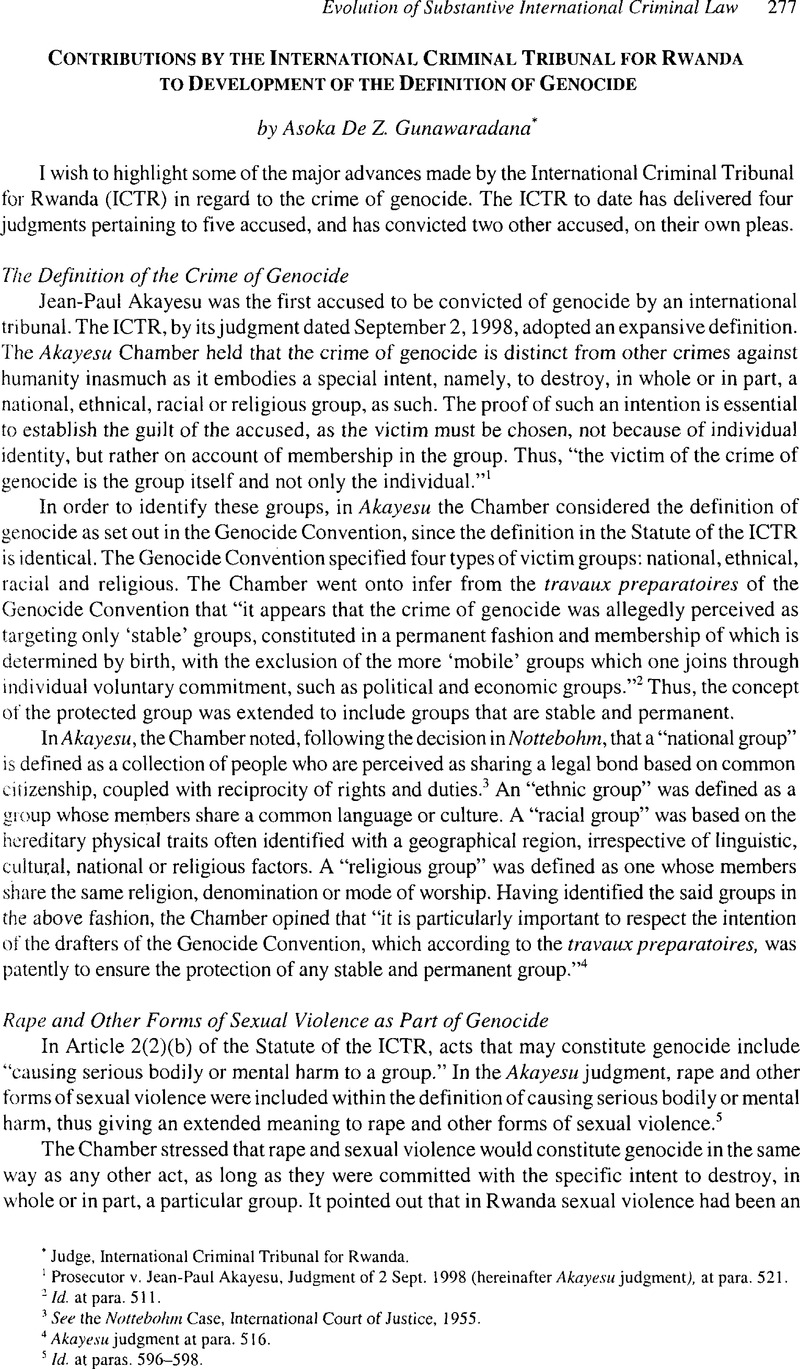No CrossRef data available.
Article contents
Contributions by the International Criminal Tribunal for Rwanda to Development of the Definition of Genocide
Published online by Cambridge University Press: 28 February 2017
Abstract

- Type
- Evolution of Substantive International Criminal Law Through Specialized International Criminal Tribunals and the ICC
- Information
- Copyright
- Copyright © American Society of International Law 2000
References
1 Prosecutor v. Jean-Paul Akayesu, Judgment of 2 Sept. 1998 (hereinafter Akayesu judgment), at para. 521.
2 Id. at para. 511.
3 See the Nottebohm Case, International Court of Justice, 1955.
4 Akayesu judgment at para. 516.
5 Id. at paras. 596-598.
6 In its findings, the Chamber held that the prosecutor had proved that numerous Tutsi women were forced to endure acts of sexual violence, mutilations and rape, often publicly and often committed by more than one assailant, and that Akayesu encouraged rapes. The Chamber was satisfied that the acts of rape and sexual violence were committed solely against Tutsi women and resulted in physical and psychological destruction of Tutsi women.
7 Kambanda pleaded guilty during his initial pleadings on all the six counts, including genocide, conspiracy to commit genocide, direct and public incitement to commit genocide and complicity in genocide. The Chamber found that the aggravating circumstances surrounding the crimes committed by Kambanda negated the mitigaling circumstances, especially since Kambanda was prime minister at the time he committed the crimes. Kambanda was sentenced to life imprisonment.
8 Akayesu judgement at para. 555.
9 Id.
10 Id. at para. 556.
11 Id. at para. 557.
12 Id. at para. 558.
13 Id. at para 562.
14 ld. at para. 469.


